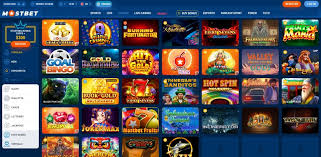Payment Methods Comparison in Modern Online Transactions

Payment Methods Comparison in Modern Online Transactions
In the increasingly digital landscape of commerce, understanding different Payment Methods Comparison in https://mostbett-azerbaycan.com/ is crucial. Each method comes with its own set of advantages and drawbacks, making it essential for consumers and businesses alike to choose wisely. This article delves into the most prominent payment methods available today, facilitating a comprehensive comparison to guide your choices.
1. Credit and Debit Cards
Credit and debit cards remain the most widely used payment methods globally. These cards offer instant processing, making transactions quick and convenient. Card payments can also provide fraud protection and rewards, appealing to consumers. However, they can also incur interest charges if balances are not paid in full, along with potential transaction fees for merchants.
2. Digital Wallets
Digital wallets, such as PayPal, Google Pay, and Apple Pay, have gained significant traction in the last decade. These payment methods store users’ financial information securely, allowing for swift transactions without the need to enter card details each time. Moreover, many digital wallets offer enhanced security features, such as two-factor authentication, making them a favored choice for online shopping. Nonetheless, users should be mindful of transaction fees and the long-term sustainability of the service providers.
3. Bank Transfers

Bank transfers are another traditional means of completing transactions, especially for larger sums. They often come with low fees, but the processing time can vary, leading to delays in confirming payments. This can be a disadvantage in fast-paced environments where speed is essential.
4. Cryptocurrency
With the rise of blockchain technology, cryptocurrencies like Bitcoin and Ethereum have emerged as innovative payment methods. They offer decentralization, privacy, and lower transaction costs, appealing to tech-savvy users. However, their volatility can deter some merchants and consumers from adopting them. Regulatory uncertainty also poses challenges for broader acceptance in the market.
5. Buy Now, Pay Later (BNPL)
The BNPL model has attracted attention, particularly among younger consumers. Services like Afterpay and Klarna allow users to make purchases and pay for them over time, often interest-free. This flexibility can enhance purchasing power, but overspending may lead individuals into debt if they are not careful with their repayment strategies.
6. Contactless Payments
Contactless payments using NFC (near-field communication) technology have transformed the way consumers shop, enabling swift transactions with just a tap of a card or smartphone. They are widely accepted in brick-and-mortar stores as well as online, making payment transfer seamless. Security features surrounding contactless payments are robust, but consumers should still ensure they monitor their accounts for unauthorized activities.
7. Prepaid Cards

Prepaid cards offer a viable option for those who want to manage spending more effectively. Users load a specific amount onto the card, which can help prevent overspending. They are widely accepted and can be used for online shopping. Unlike traditional credit cards, prepaid cards do not have the same impact on credit scores, making them ideal for those looking to avoid debt or establish a spending limit.
8. Mobile Banking Apps
Mobile banking apps have evolved to include payment functionalities, allowing users to manage their finances and make payments from one platform. Some of these apps also incorporate budgeting tools, helping users track their spending and savings. While the convenience of mobile banking is undeniable, it is vital to choose apps with strong security measures to protect sensitive financial data.
9. Payment Links and QR Codes
Payment links and QR codes have gained popularity, especially in small business transactions. By generating payment links, vendors can send invoices electronically, while QR codes make it simple for customers to make payments using their mobile devices. While these methods enhance convenience, the reliance on internet connectivity may pose challenges in certain regions.
Conclusion
When choosing a payment method, users should consider their individual needs and circumstances. Each method presents unique benefits and challenges, and the best choice varies depending on factors like transaction speed, security preferences, and budget constraints. By understanding the landscape of payment options, consumers and merchants can navigate the digital economy more adeptly, ensuring successful transactions that align with their values and expectations. Remember to stay informed about emerging payment technologies, as the market continues to evolve, offering new solutions to meet consumer needs.
Ultimately, being savvy about payment methods not only enhances your security but also maximizes your purchasing power in today’s fast-paced economic environment.